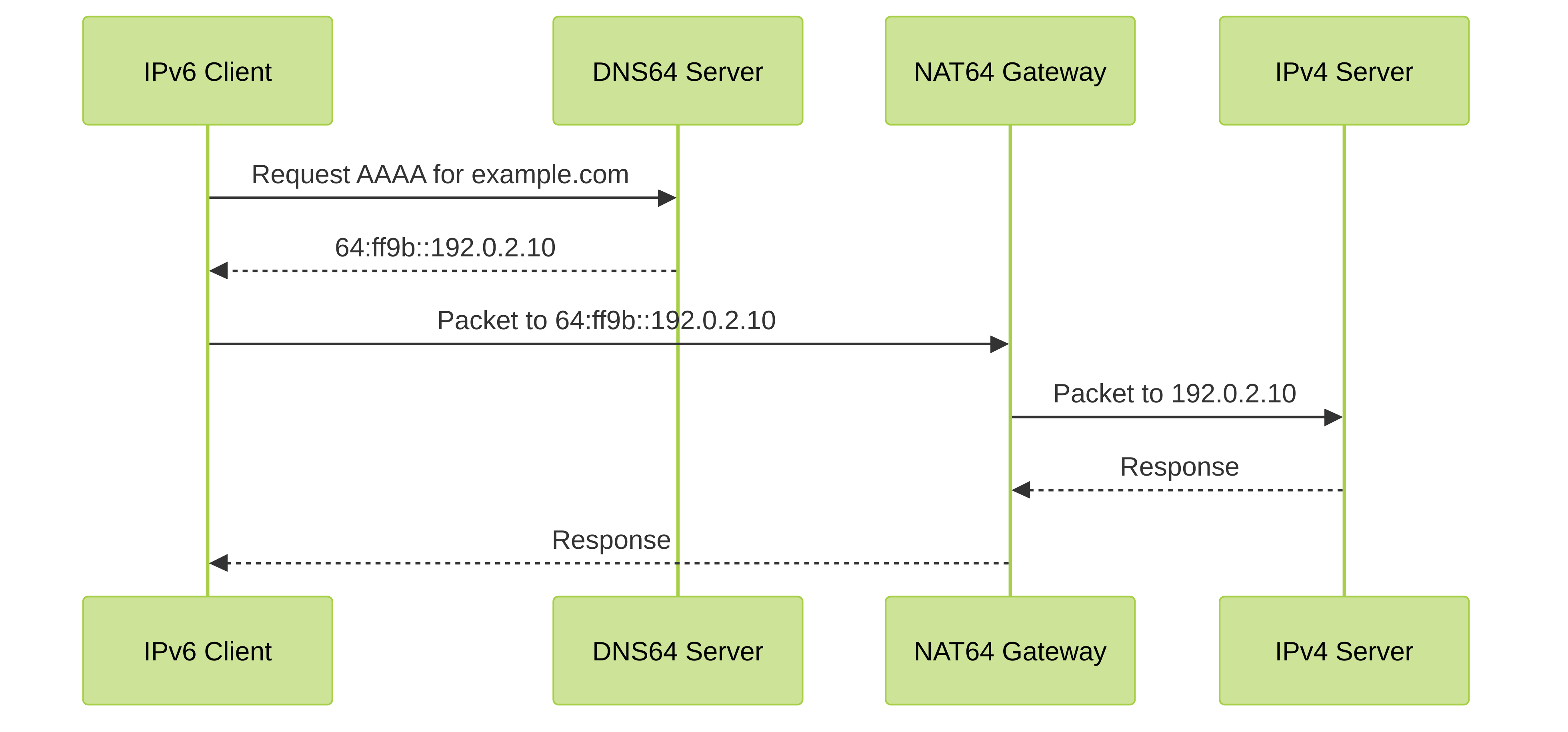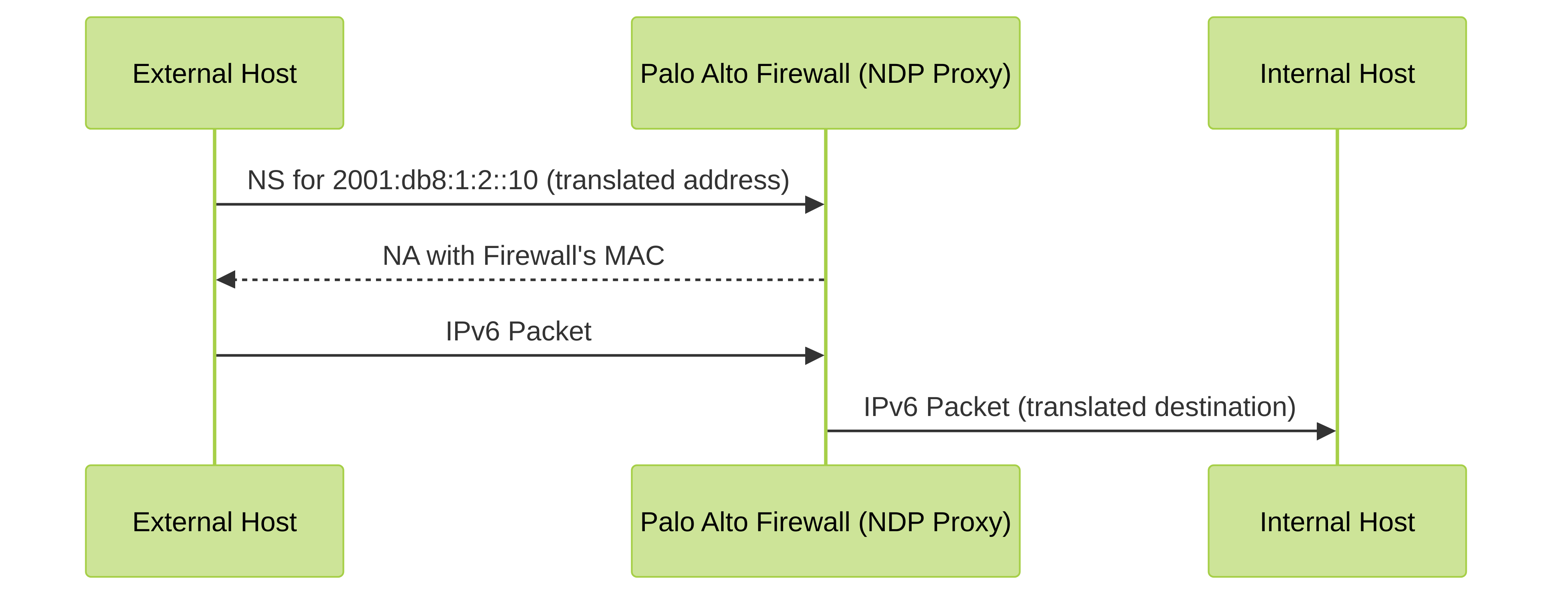🔁 Palo Alto Networks IPv6 NAT Solutions for PCNSE
Introduction to IPv6 NAT and the PCNSE
IPv6 NAT (Network Address Translation) is a crucial topic for the PCNSE exam. While IPv6 was designed with ample address space to eliminate the need for traditional NAT like in IPv4, there are specific transition scenarios and use cases where NAT techniques become necessary. This study guide covers the types of IPv6 NAT supported by Palo Alto Networks firewalls, their configurations, and their relevance to the PCNSE exam.
1. 🌐 NAT64 (IPv6 to IPv4 Translation)
NAT64 allows IPv6-only clients to communicate with IPv4-only servers. This is vital during the transition to IPv6, enabling continued access to existing IPv4 infrastructure. It operates by embedding IPv4 addresses within a specific IPv6 prefix.
- Use Case: Accessing IPv4 services from an IPv6-only network.
-
Implementation:
Employs the well-known prefix
64:ff9b::/96(RFC 6052) and a DNS64 server. The DNS64 server synthesizes AAAA records from A records, effectively embedding the IPv4 address into the returned IPv6 address. - Example: An IPv4 address 192.0.2.10 would be represented as 64:ff9b::192.0.2.10.
- Configuration on Palo Alto Networks: Requires NAT64 rules and security policy configuration. Source translation is performed for outbound traffic, and destination translation for inbound.

NAT64 Interaction Sequence
2. 🔄 NPTv6 (Network Prefix Translation for IPv6)
NPTv6 offers stateless translation between internal and external IPv6 prefixes. This allows for flexibility in addressing schemes, especially useful for organizations with multiple ISPs or those anticipating changes in their assigned prefixes.
- Use Case: Simplifies prefix changes without internal renumbering, multi-homing with different providers.
- Characteristics: Stateless operation, only the prefix is modified, interface identifier remains the same.
- Example: Translating fd00:1:2:3::/64 (internal) to 2001:db8:1:2::/64 (external).
- Configuration on Palo Alto Networks: Define NPTv6 policies specifying the internal and external prefixes. Bi-directional translation can be configured within the same policy.

NPTv6 Network Topology Example
3. 🚫 Unsupported: NAT66 (IPv6 to IPv6 Translation)
NAT66 (IPv6 to IPv6 translation) is generally not recommended nor supported on Palo Alto Networks firewalls. IPv6's vast address space makes traditional address conservation techniques less relevant.
4. 🔍 NDP Proxy and its Role with NPTv6
Neighbor Discovery Protocol (NDP) Proxy is crucial for NPTv6 functionality. It allows the firewall to respond to Neighbor Solicitation (NS) messages for translated addresses, enabling external hosts to resolve MAC addresses and communicate with internal hosts behind the firewall.

NDP Proxy Operation with NPTv6
5. Comparing NAT64 and NPTv6

Basic Comparison of NAT64 and NPTv6 Topologies
| Feature | NAT64 | NPTv6 |
|---|---|---|
| Purpose | IPv6 to IPv4 translation | IPv6 prefix translation |
| Statefulness | Stateful | Stateless |
| DNS64 Required | Yes | No |
| NDP Proxy | Not required | Typically required |